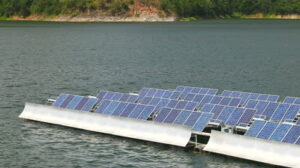Floating Solar Panels In India
Not enough free land? Now India is using its water bodies for installing solar panels. Floating solar panel technology as the name suggests is installed on water bodies. India’s aggressive objective of installing 100GW of solar power by 2022 has made the country look at various options. With each passing year, the country is moving slowly but steadily towards its gigantic target. Floating solar panels are not a new concept. It has been prevalent in many corners of the world. Japan’s 300 kW solar plant which became operational in July 2016 was also equipped with micro inverters.
India is increasingly looking at floating solar power plants to generate power. The country’s first 10kW floating solar panel technology was installed by Vikram Solar in Kolkata back in 2014. Another 100kW plant was installed in Manipur by MANIREDA (Manipur Renewable Energy Development Agency). In 2015, Coal India too came up with a proposal of installing floating solar technology. Now NTPC, India’s largest power utility has installed the country’s largest floating power plant in Kerala. The project was developed as a part of the “Make In India” scheme. The floating platform was designed by the R&D team of NTPC and Chennai’s Central Institute of Plastic Engineering & Technology (CIPET). The 100kW floating plant was installed in just 22 days.
According to NTPC, there are numerous such water bodies in India which can be utilized as floating solar technology. The solar power plant can be used extensively in Kerala which has more availability of water than land. According to NTPC India has a potential of installing about 800MW of such floating solar panels in India. It also said that it would look at expanding such power plants in India.
Though the floating solar plants or “floatovolataics” are getting more popular in India owing to land paucity, they do involve a higher maintenance and installation cost. The transmission costs are also high. However, they are regarded as a better alternative to land because they can be built on industrial water bodies like wastewater treatment plants, cooling facilities in factories and power plants etc. They also help in keeping the water safe from algae growth and evaporation by covering the surface of the water body. Other countries like Australia, US, UK, and Japan have also adopted this technology.
Google+


